New eyes are on the cryptocurrency market since recent developments. If you are someone who is new to the space, or does not have time to keep up with all of the new unicorn projects — don’t worry. We’ve got you covered. Here is a brief list of some of the aspiring cryptocurrencies on the market.
Methodology behind the rankings
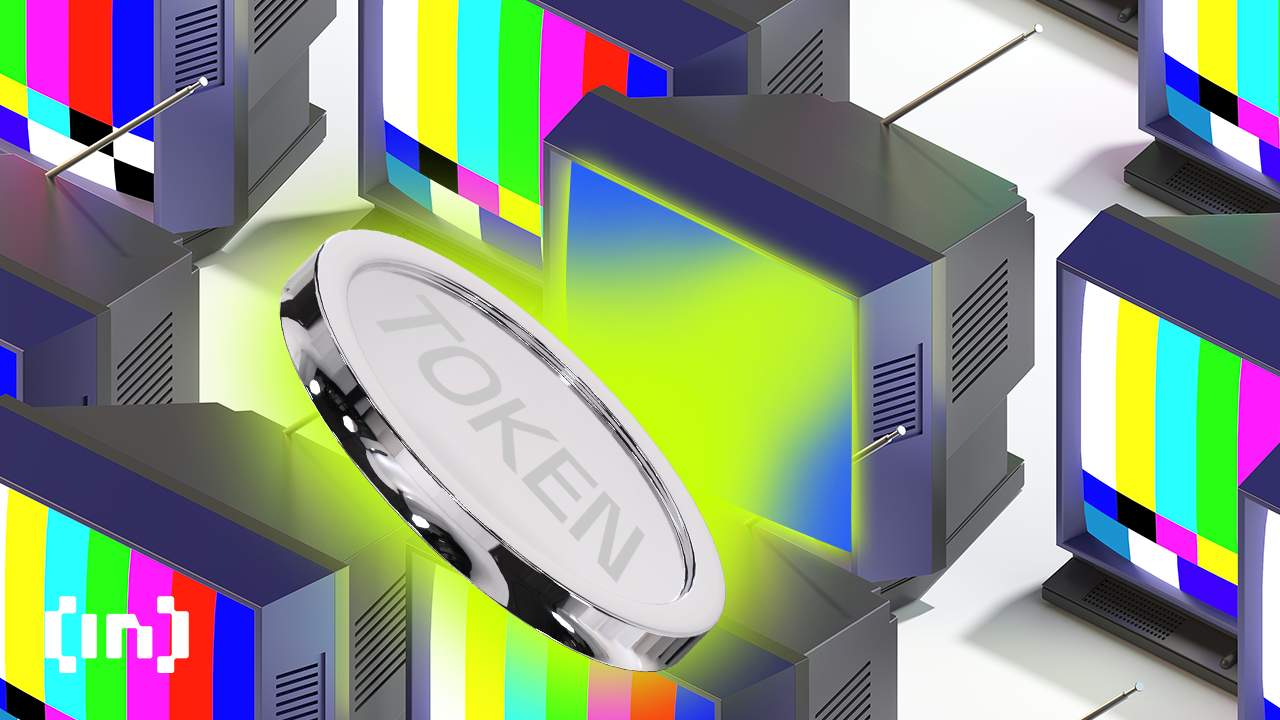
In order to determine the rankings for these coins, a methodology with three specific criteria will be used. This will be done in order to provide our basis and reasoning for these rankings.
The criteria for the methodology is as follows:
- Market capitalization — The cryptocurrencies chosen will be picked inside the set of the top 100 cryptocurrencies when ranked by market capitalization. This is done to filter out lesser known projects that are not yet well established in the cryptocurrency industry.
- Rate of increase in 2025 — Cryptocurrencies that have historically performed well often continue to do so in the future. Therefore, the cryptocurrencies chosen have had outstanding rates of increase when measuring from the beginning of the year.
- Chart outlook and 2025 events — This is a more arbitrary criterion, since chart readings and the importance of events are somewhat subjective in nature. Therefore, this criterion should be seen as more of a personal opinion that is backed by arguments rather than as a stated fact.
This data was sourced from CoinMarketCap, 16:00 UTC. All charts were taken from Tradingview.
1. Celestia (TIA)
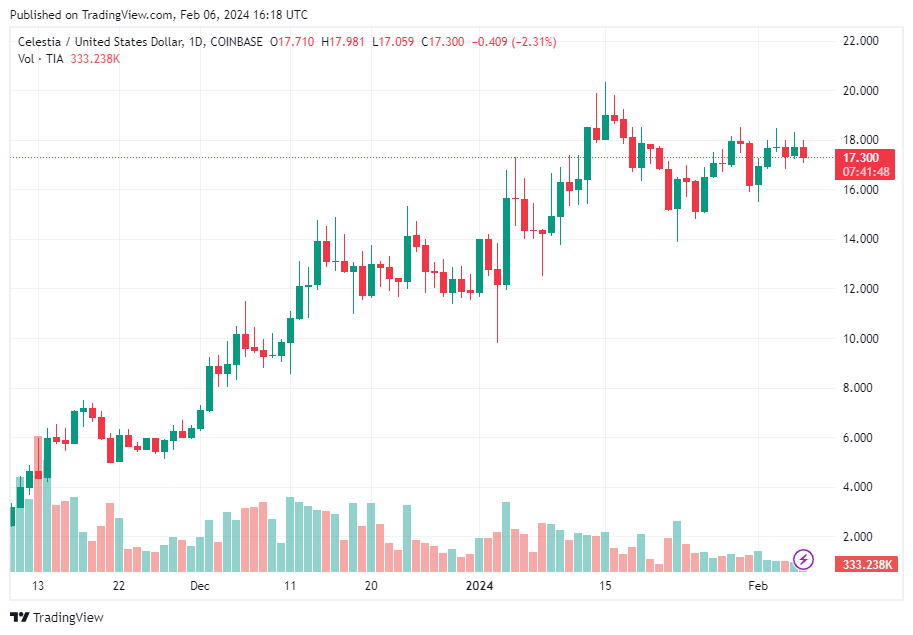
Price: $17.31
Market Cap: $2.81 Billion
Market Cap Rank: #30
Celestia (TIA) is the token for the eponymously named Celestia modular blockchain network. It was founded by Mustafa Al-Bassam, a computer science Ph.D. and hacker, and Ismail Khoffi, a software engineer.
Celestia is a data availability as a service blockchain. Data availability refers to a concept where remote storage service providers ensure data remains accessible at the necessary performance level across various conditions, from routine operations to catastrophic events.
In cryptocurrency and blockchains, data availability is the challenge in blockchain systems of ensuring that all data within a new block is truly accessible to the network.
The data availability problem arises when there’s uncertainty about whether a block’s data has been fully published, raising concerns about possible hidden malicious transactions. Data availability layers like Celestia are a solution that allows verification that a block’s complete data is available by downloading only a small part of it.
TIA is the token for the Celestia ecosystem. The token pays for services on Celestia and is a proof-of-stake (PoS) token on Osmosis. There are plans to introduce a fee burn mechanism in the future, similar to Ethereum’s EIP-1559.
2. Render (RNDR)
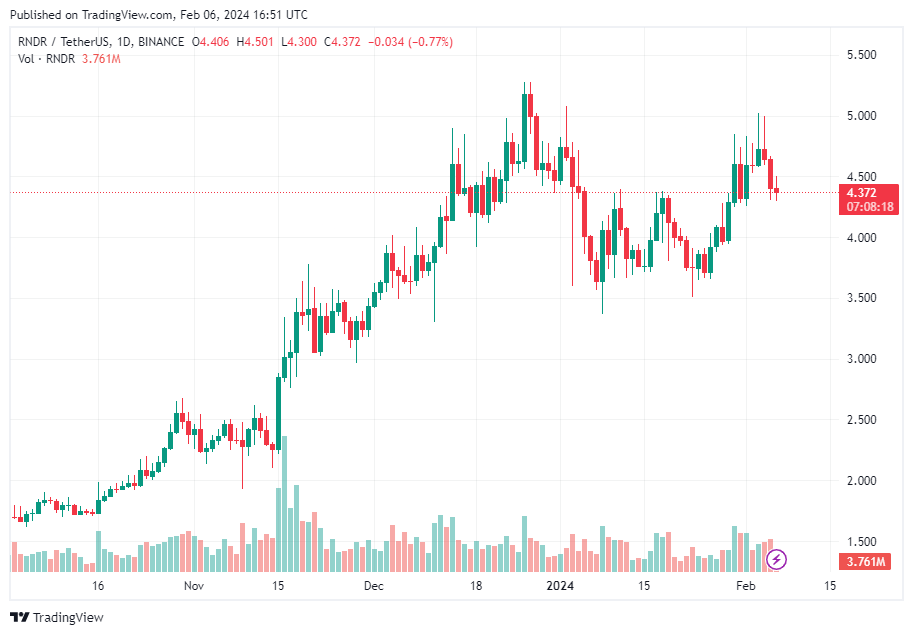
Price: $4.37
Market Cap: $1.64 Billion
Market Cap Rank: #46
The Render Network is a project that integrates blockchain and cryptocurrency technologies, allowing individuals to offer their spare GPU resources for rendering motion graphics and visual effects.
Contributors are compensated with Render tokens (RNDR), the platform’s native digital currency. The RNDR token initially launched on Ethereum. Although it would eventually move to Solana, taking advantage of the low fees and high transaction throughput.
Moving Render’s core infrastructure to Solana is a watershed moment that unlocks major new capabilities like real-time streaming and dynamic NFTs
Jules Urbach, founder of Render Network
The Render network bridges the gap between node operators with idle GPU resources and creators in need of extensive 3D rendering capabilities, facilitating their move to cloud-based solutions.
Leveraging a decentralized peer-to-peer architecture, the Render Network delivers exceptional scalability, speed, and cost-efficiency. Beyond just a GPU compute platform, Render also serves as a foundation for artists and developers to create new services and applications.
This new approach is tailored to the digital economy, encompassing areas like advanced digital rights management, artificial intelligence, and non-fungible tokens (NFT).
3. Pendle (PENDLE)
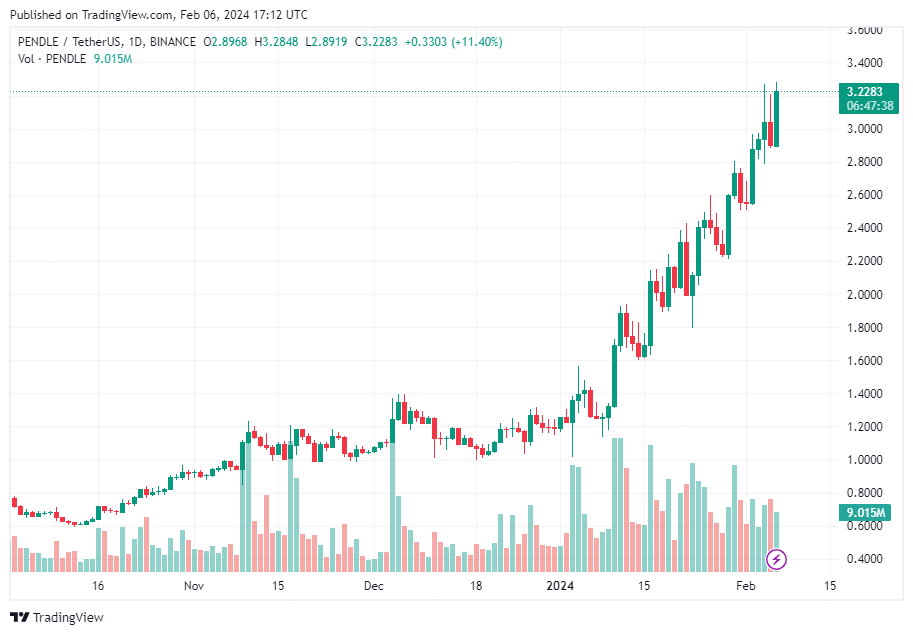
Price: $3.24
Market Cap: $773 Million
Market Cap Rank: #80
Pendle, also known as Pendle Finance, is a permission-less protocol for executing yield management strategies The dApp was launched in Jun. 2021 and was founded by TN Lee and Dan Anthony.
The yield aggregator allows users to take their yield-bearing tokens, such as liquid staking tokens (LSTs) or liquid re-staking tokens (LRTs) and separate the yield from the principal into an entirely new token for each — a yield token (YT) and principal token (PT).
Pendle effectively creates a secondary market for the yield of an LST or LRT rather than for the token itself. With this model, you can execute strategies, such as:
- Fixed yield: Earn a fixed return.
- Long yield: Increase potential earnings by betting on increasing an LST/LRT yield through additional purchases.
- Risk-free additional yield: Boost earnings without taking on extra risks by providing liquidity.
This has led to unique use cases in DeFi for executing strategies like hedging against impermanent loss, leveraged point farming strategies, and many more. Many people are currently using Pendle as a way to farm points on several protocols.
The PENDLE token is the utility token of the Pendle protocol. It plays several key roles in the platform’s ecosystem, such as enabling liquidity provision, offering staking rewards, and allowing for governance participation.
4. Jupiter (JUP)
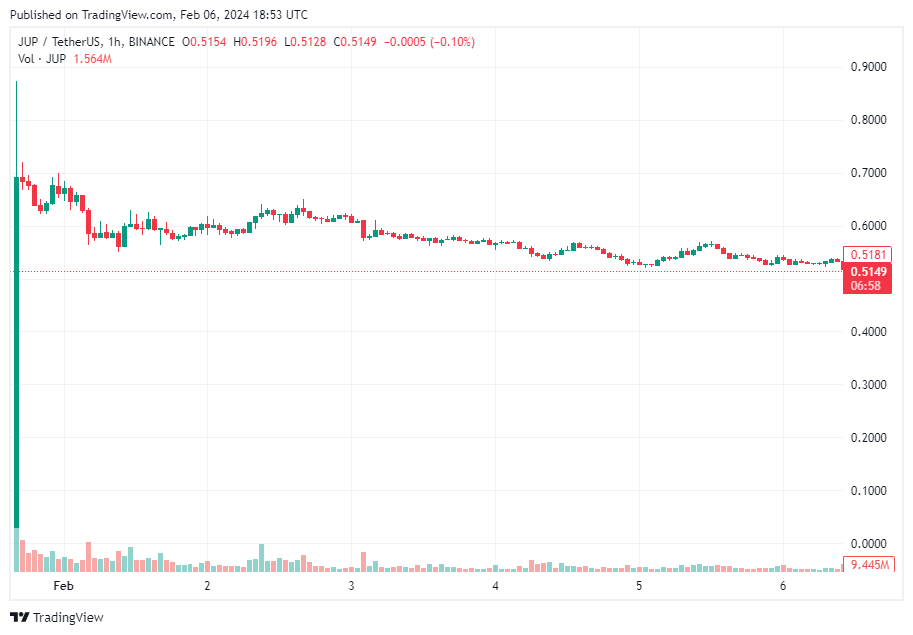
Price: $0.518
Market Cap: $700 Million
Market Cap Rank: #90
Jupiter is a decentralized exchange (DEX) aggregator built on Solana. The DEX was created by a pseudo-anonymous founder known as Meow on X (formerly known as Twitter).
“Jupiter started as an aggregator, but have evolved far beyond that into being a full stack ecosystem play, full array of spot products, one of the top perp platforms in DeFi, Solana gateway, our fledging LFG launchpad… Furthermore, we are not interested in spreading our efforts across chains. We are interested in building the most comprehensive and cohesive set of services in Solana.”
Meow, Jupiter founder
A DEX aggregator, such as Jupiter, gathers the price data from multiple DEXs to find the best price for its users. Although this was the main use of Jupiter, the protocol has since expanded into other territories.
On the DApp, you can trade perpetuals, set a dollar cost average (DCA) schedule, set limit orders, bridge assets to Solana, and use a fiat on-ramp.
Lastly, JUP is the native token of the Jupiter protocol. JUP is a governance token that grants community members the ability to approve, sanction, and vote on all parts of the Jupiter platform.
5. Jito (JTO)
Price: $1.78
Market Cap: $208 Million
Market Cap Rank: #232
Jito is an order flow auction (OFA) built on Solana. Order flow auctions democratize the earnings made from maximal extractable value (MEV). This is facilitated by running software that effectively creates an auction for block space.
Validators running OFA software can earn in a way that competes with specialized MEV extractors. By implementing Jito on Solana, validators can increase their earnings from trader transactions.
“MEV is a rapidly growing business model for blockchains. JITO has a great approach to maximize the benefits of MEV to the network and minimize the negative externalities of MEV to the rest of the users and applications running on Solana.”
Anatoly Yakovenko, CEO of Solana Labs
They also can distribute MEV rewards to stakers, making it more appealing for others to invest their stake with them. Users can stake their SOL in return for a liquid staking token that allows them to earn from staking and MEV. However, it should be noted that JTO is the governance token for Jito, while JitoSOL is the liquid staking token.
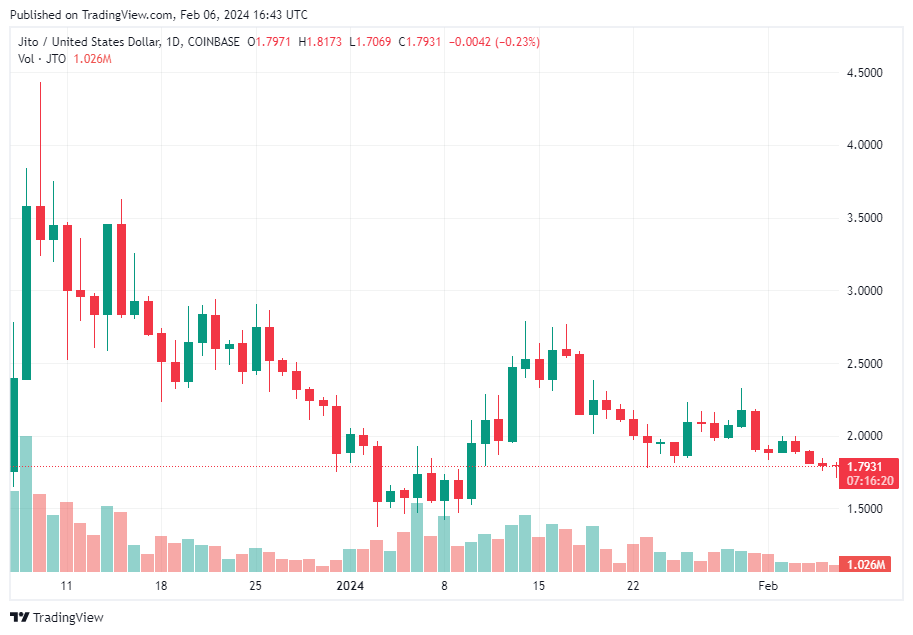
6. Chainlink (LINK)
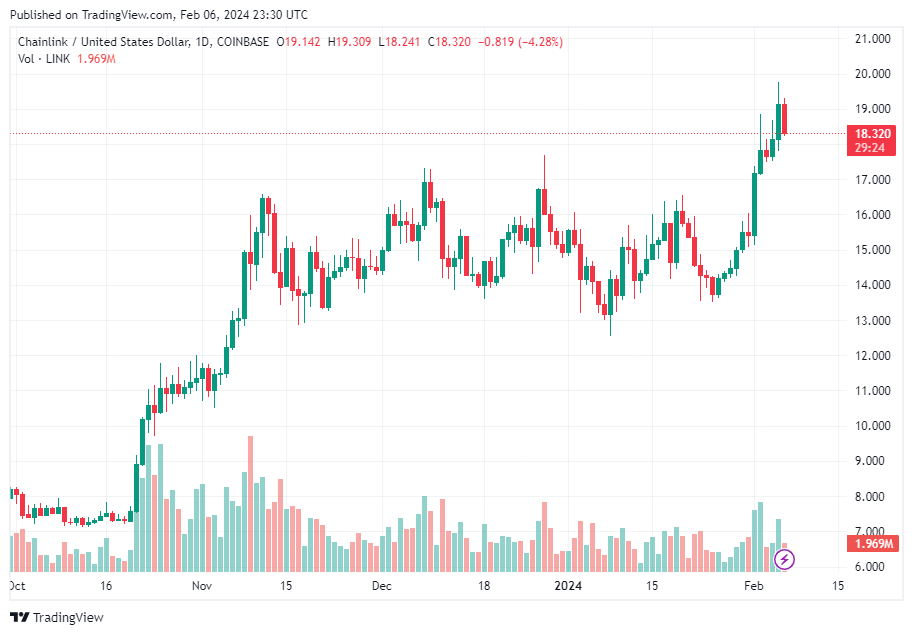
Price: $18.32
Market Cap: $10.7 Billion
Market Cap Rank: #11
Chainlink is a decentralized oracle service that sends both on and off-chain data to dApps on the blockchain. This is particularly useful for applications that require time-sensitive and accurate information to work, such as finance applications.
Sergey Nazaro and Steve Ellis founded Chainlink in 2017. O.G. crypto enthusiasts are no strangers to Chainlink. Since its inception, it has made important products and services advancing the field of cryptocurrency.
Moreover, many DeFi and CeFi services are currently using Chainlink’s services. Some of these services include Chainlink VRF (verifiable random function), CCIP (cross-chain interoperability protocol), DONs (decentralized oracle networks), and more,
LINK is the native token of the Chainlink ecosystem and is used to pay for Chainlink services. LINK Holders can also stake their holdings to earn more cryptocurrency.
Sponsored7. Solana (SOL)
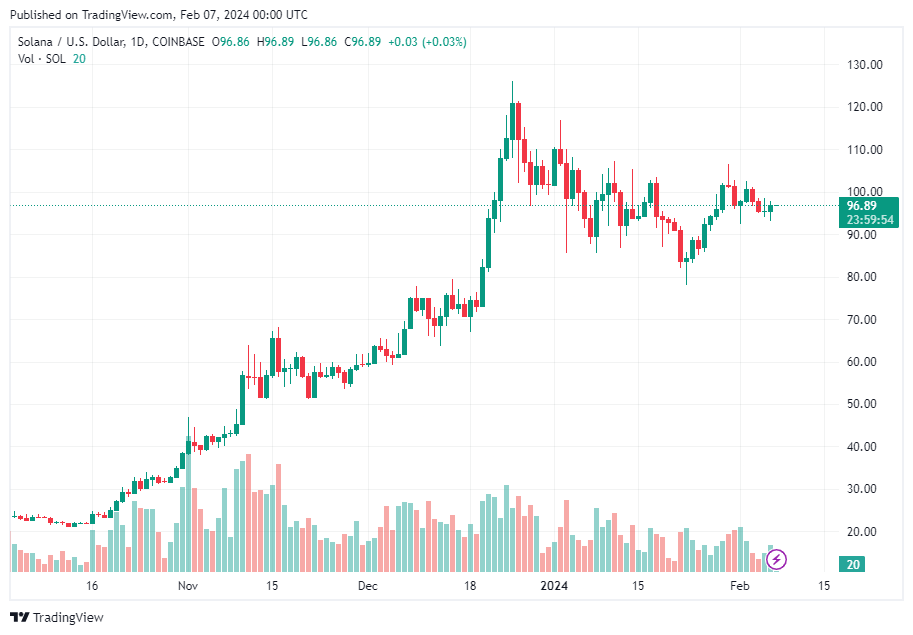
Price: $96.99
Market Cap: $42.3 Billion
Market Cap Rank: #5
Solana is a popular project that is mainly used to facilitate decentralized applications (DApp) creation. It uses both a proof-of-history- and a proof-of-stake mechanism. Due to this hybrid model, it has gained significant interest from both institutional and small-time traders.
One of the project’s goals is to increase the scale in which decentralized finance is accessible without compromising its security or decentralization. It aims to do this through its proof-of-history consensus.
There is also a Solana-based NFT market in several exchanges. This will allow its users to mint and trade NFTs built on the Solana blockchain.
The SOL token is a utility token used to pay for gas on the Solana blockchain. SOL’s initial annual inflation rate is 8%, which decreases by 15% year after year before achieving a long-term fixed inflation rate of 1.5% every year. Holders can also stake the token.
8. Stacks (STX)
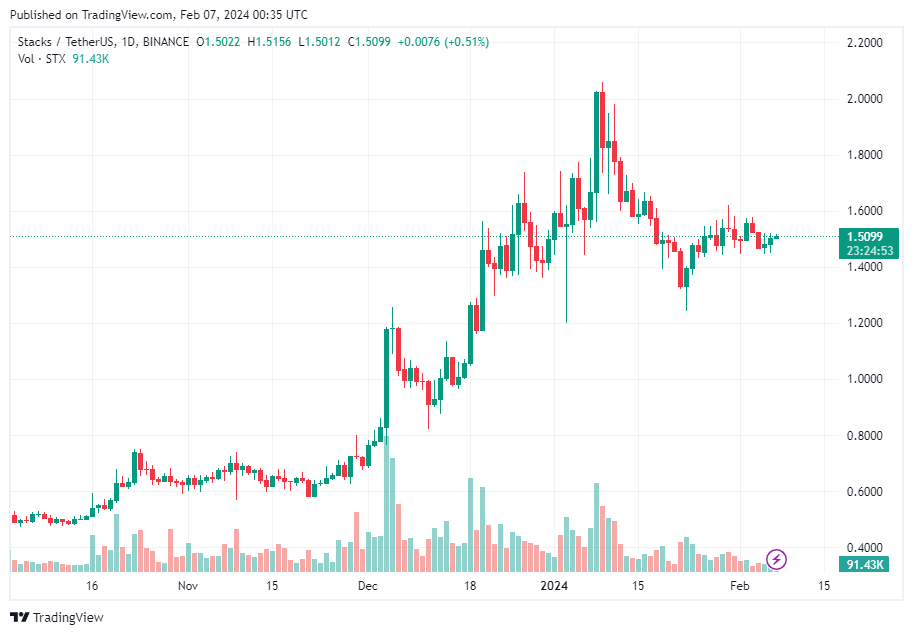
Price: $1.50
Market Cap: $2.16 Billion
Market Cap Rank: #39
Stacks (formerly Blockstack) is a Bitcoin layer-2 (L2) that allows for creating smart contracts and DApps leveraging the Bitcoin blockchain as a base layer. The project gained prominence as the first cryptocurrency to receive SEC qualification for its token offering.
Unlike most L2s on Ethereum, Stacks is not a rollup; it is a separate blockchain. Stacks publishes data hashes to Bitcoin blocks, utilizing the finality properties. It also uses a proof-of-transfer mechanism to update the blockchain.
However, the stack consensus mechanism operates on Bitcoin and cannot exist without Bitcoin. On Stacks, all data and transactions is hashed and irreversibly recorded on the Bitcoin L1 with each Bitcoin block.
This ensures that the validity of any data on Stacks is confirmed by examining the matching hash on Bitcoin L1. The method of storing hashes on L1 is akin to rollups despite other distinctions.
Furthermore, contracts on the Stacks layer can access and react to transactions on Bitcoin L1. Additionally, assets within the Stacks layer can be transferred via Bitcoin L1 transactions.
STX tokens are the native currency of the Stacks layer, facilitating the operation of smart contracts and applications on Bitcoin. By “Stacking,” or holding STX tokens, users can earn BTC rewards.
Sponsored Sponsored9. Polygon (MATIC)
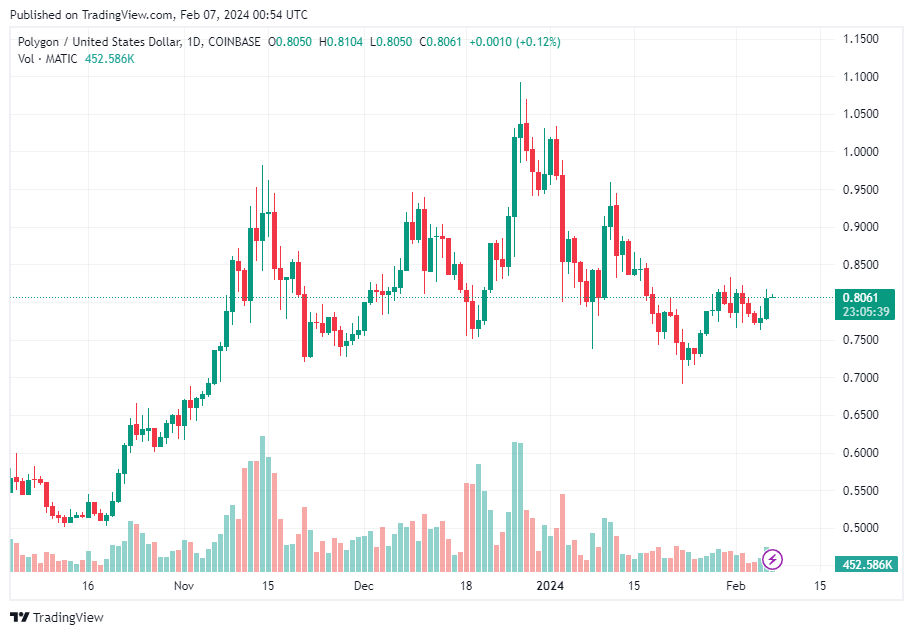
Price: $0.80
Market Cap: $7.276 Billion
Market Cap Rank: #14
Polygon is a platform that was founded in 2017. Initially known as the Matic Network, the project was created by Jaynti Kanani, Sandeep Nailwal, Anurag Arjun, Mihailo Bjelic, and many others to address blockchain scalability issues on Ethereum.
Polygon has released multiple products, particularly those that leverage zero-knowledge technology, sidechains, and rollups. Developers can even leverage their software development kit to build their products.
What’s more, the company has continuously brokered partnerships with companies such as Fox News, DraftKings, Disney, Stripe, NFL, and Meta.
MATIC is the native cryptocurrency of the Polygon ecosystem. However, an upgrade has allowed users to transfer their MATIC to the new token POL.
10. Ethereum (ETH)
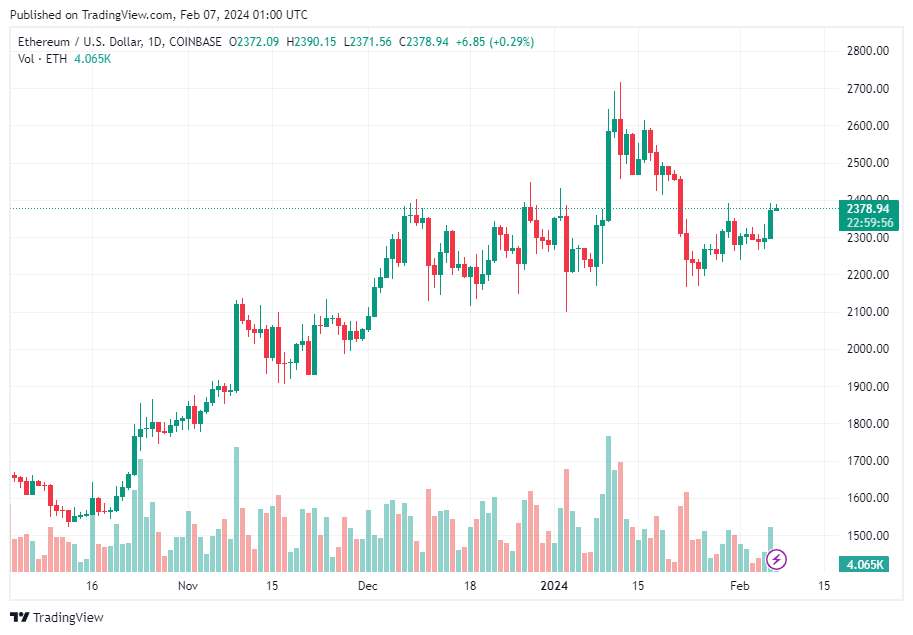
Price: $2,380
Market Cap: $285 Billion
Market Cap Rank: #2
Finally, in the top position, we have Ethereum. ETH is the second-highest cryptocurrency by market capitalization. It is an open-source blockchain system that focuses on smart contracts and DApps. Furthermore, it acts as a ”host” for numerous other cryptocurrencies.
With the rise of NFTs, the interest in ETH has also increased since it is a favorite token of NFT marketplaces. In a way, Ethereum is on its way to becoming ”the currency of the internet.” However, this increased interest created the issue of high gas fees.
Despite these small issues, it seems likely that with the ongoing rise of NFTs, play-to-earn games, rollups, and L2s, ETH could be one of the main benefactors of this growth.
ETH reached its all-time high on Nov. 10, 2021, the same day BTC did. The token has not decreased significantly in price since then. Many see Ethereum as the value layer that bootstraps many other blockchains. As a result, some have even joked that many blockchains will become sidechains to Ethereum in the future.
Honorable mention
Nano (XNO)
Price: $1.09
Market Cap: $144 Million
Market Cap Rank: #279
Having been in the market for a long time, Nano is well known, though its price may not reflect its long existence. The token is built as a “currency for everyone, without fees,” which is its objective. Nano features zero fees, is not based on mining, and has instant payments.
Nano’s speed is its unique selling point. The token uses a directed acyclic graph instead of a blockchain, which comes with its own advantages. It can apparently support up to 1,000 transactions per second.
Nano reached its all-time at a considerably higher $37.62. It has a long way to go before reclaiming those numbers. The team is hoping that an adherence to ISO standards and a rebranding to XNO may help boost its recovery.
2025 could be a strong year for crypto growth
The ten cryptocurrencies listed here are looking good in 2025, which should see more exciting developments. You can never be entirely sure in the crypto market, but these assets are gaining the most traction.
As always, investors should pay close attention to what is happening in the market and with their assets of interest. Nothing is guaranteed in crypto, so you should never invest more than you can afford to lose. However, if on the lookout for specific assets, then the ones listed here might pique interest.

